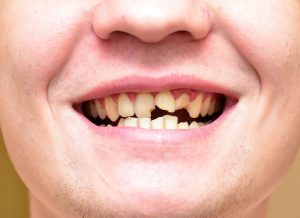Broken Tooth Dental Wax

A broken tooth can be a painful and frustrating experience, affecting not only your oral health but also your self-confidence. In such situations, temporary fixes like dental wax can provide relief until you can visit a dentist. Dental wax, often used to alleviate discomfort from broken teeth, orthodontic appliances, or dentures, is a simple, non-invasive solution to manage pain and irritation.
Understanding Dental Wax
Dental wax, typically made from beeswax or paraffin, is molded to cover the sharp edges of a broken tooth, reducing irritation to the cheek, tongue, or lips. It’s a temporary measure, not a substitute for professional dental care. The wax creates a protective barrier, helping to minimize discomfort and allowing individuals to eat, speak, and function more comfortably while awaiting a dental appointment.
Applying Dental Wax
Applying dental wax to a broken tooth is relatively straightforward:
- Purchase Dental Wax: It’s available at most pharmacies or online. Ensure you buy a product specifically designed for dental use.
- Clean the Area: Before application, gently clean the broken tooth and surrounding area with water to remove any debris.
- Soften the Wax: Hold the wax between your fingers or use a warm surface to soften it slightly. This makes it easier to shape.
- Shape and Apply: Mold the wax into a small piece that can cover the sharp edge of the broken tooth. Press it onto the tooth gently but firmly.
- Check the Fit: Ensure the wax doesn’t interfere with your bite or cause discomfort. Adjust as needed.
Importance of Professional Care
While dental wax provides temporary relief, it’s crucial to visit a dentist as soon as possible. A broken tooth can lead to more serious issues, such as infection, if not treated properly. Dentists can assess the damage and provide the appropriate treatment, whether it’s a filling, crown, or, in severe cases, extraction followed by a dental implant or bridge.
Preventing Broken Teeth
Prevention is always better than cure. Regular dental check-ups, a good oral hygiene routine, and a diet low in sugars can help prevent many dental issues. Additionally, using a mouthguard during sports activities can protect your teeth from injury.
Dental Wax for Orthodontic Appliances and Dentures
Dental wax is not just for broken teeth; it’s also useful for individuals with orthodontic appliances or dentures. It can alleviate discomfort from wires or sharp edges of orthodontic devices and help adjust to new dentures by covering any irritating parts.
Conclusion
Dental wax is a handy temporary solution for managing the discomfort of a broken tooth. However, it should not delay a visit to the dentist. Prompt professional care is essential for preventing further complications and ensuring the best possible outcome for your dental health. Remember, while dental wax offers relief, it’s only the first step in addressing a broken tooth. Comprehensive dental care is necessary for long-term health and comfort.
How long can I use dental wax on a broken tooth?
+Dental wax should only be used temporarily until you can see a dentist. It's not a permanent solution and should not be used for more than a few days without consulting a dental professional.
Can dental wax be used with other dental issues?
+Yes, dental wax can be used with orthodontic appliances to cover sharp wires and with dentures to alleviate discomfort from new or adjusted dentures.
How do I remove dental wax from my tooth?
+Dental wax can be removed by gently scraping it off with your fingernail or a soft cloth. If the wax is stubborn, you can slightly warm the area with your fingers or a warm cloth to soften the wax before removing it.
In conclusion, while dental wax offers a temporary solution for the discomfort associated with a broken tooth, it’s essential to prioritize a visit to the dentist for proper assessment and treatment. By understanding the role of dental wax and the importance of professional dental care, individuals can better manage their oral health and prevent more severe issues from arising.